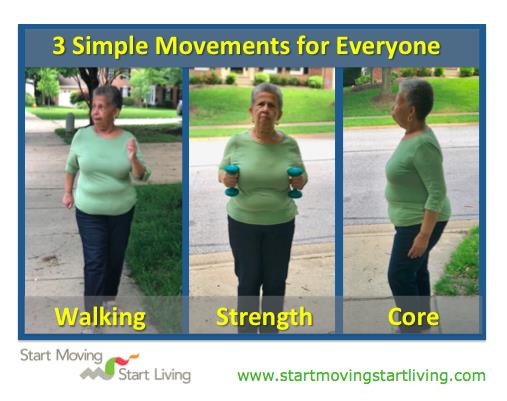Walking, muscle strengthening and core exercises are three easy and effective ways for all patients to counteract osteoarthritis.
Osteoarthritis is a chronic and progressive disease characterized by loss of the cartilage that covers and protects the ends of the bone, causing the bone to rub against bone and leading to inflammation and pain.
Osteoarthritis is the leading cause of disability in the United States, affecting more than 22 million adults. Nearly equal numbers of women and men have the condition, but women tend to develop symptoms after age 55, about 10 years later than men do.
Excess weight is strongly linked to osteoarthritis because it places added stress on the joints. An ongoing study of people living in Framingham, Mass., found that people who were overweight as young adults had a higher rate of knee osteoarthritis early in their 30s and 40s. In the Nurses’ Health Study, women who were the heaviest at age 18 had up to 7x greater risk for severe hip osteoarthritis compared to lightest weight women.
Three kinds of core exercise should be integrated for people with osteoarthritis: flexibility, endurance or aerobic exercises, and strengthening exercises.
How much should you exercise? Current recommendations are for:
150 minutes (2.5 hours) of moderate-intensity aerobic exercise per week
(or)
75 minutes of vigorous-intensity aerobic exercise per week or an equivalent combination of moderate and vigorous exercise
Just 30 minutes a day will get you to your goal.
Exercise is considered the most effective non-drug treatment for reducing pain and improving movement in osteoarthritis, maintaining and improving your ability to move and function.
These are examples of low impact, exercises that can be done indoors or outdoors all year round:
1) Walking
Low energy, weight-bearing movement with proper footwear.
2) Muscle strengthening
Strengthening exercises help maintain and improve your muscle strength.
Strong muscles can support and protect joints that are affected by arthritis.
3) Core exercises and flexibility
Pilates or other abdominal strengthening and posture improving exercise help strengthen your core and decrease loading on your joints.
Range-of-motion exercises include gentle stretching and movements that take joints through their full span. Doing these exercises regularly – ideally every day – can help maintain and even improve the flexibility in your joints.
Bonnie Simpson Mason, MD, & Vani Sabesan, MD
Resources:
health.harvard.edu/newslett... overcoming-osteoarthritis
arthritis.org/living-with- arthritis/exercise/benefits/osteoarthritis-exercise.php
